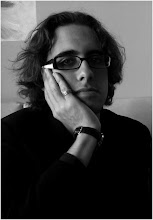The text of Die Hamletmaschine is only about nine pages long. This brevity is both blessing and curse, stepping stone and pitfall, starting point and cul-de-sac for any production taking on this piece and trying to make an evening out of it. The text is most certainly dense enough to fill hours in repetition without ever reaching a satisfactory result. For as much as Müller’s language draws the audience in, the text itself is resilient and obscures meaning within its own context. But this is no cause for headaches.
Heiner Müller once stated, “What often bores me in the productions is that the directors simply illustrate what is already in the text, instead of using it as association material, as a kind of supernovae, which inspires directors with ideas.” What is already in Müller’s text is a conglomerate of associations, quotes, and commentary – a textmachine in its own right, which processes literature, history, autobiography, theory, slapstick, politics, terrorism, sexuality, ethics. Et cetera. The textmachine deconstructs texts, assembles them again, checks on their credibility, makes fun of them
The text of our production takes its cues from Müller’s text; it pursues Shakespeare and his cultural heritage, following up quotes and penetrating deeper into the Shakespearian context. Other texts by other authors are also traced. Other histories are scrutinized. Other stories told. But this textmachine of ours is also at work when nothing in fact is spoken. It works in silence as well as in noise. It is always operating. This text is not only comprised of words but also of the movement on the stage, of light and of projection, of sound and music, of emptiness. What is not in the text is just as important. Some texts cannot be uttered, others are not allowed to make themselves heard. But their lack is always present – and an invitation to start up new textmachines.
This is the pleasure of Müller’s text that also pierces this production: the moment when body and mind are pursuing their own ideas, independent from the mise en scène, the moment of art and rebellion. In Juni 1807, Heinrich von Kleist wrote to his cousin Marie von Kleist, “it is invention everywhere, which amounts to a work of art. For not that, which is presented to the mind, but that, which the mind stimulated by this presentation thinks, is the work of art.”
Heiner Müller once stated, “What often bores me in the productions is that the directors simply illustrate what is already in the text, instead of using it as association material, as a kind of supernovae, which inspires directors with ideas.” What is already in Müller’s text is a conglomerate of associations, quotes, and commentary – a textmachine in its own right, which processes literature, history, autobiography, theory, slapstick, politics, terrorism, sexuality, ethics. Et cetera. The textmachine deconstructs texts, assembles them again, checks on their credibility, makes fun of them
The text of our production takes its cues from Müller’s text; it pursues Shakespeare and his cultural heritage, following up quotes and penetrating deeper into the Shakespearian context. Other texts by other authors are also traced. Other histories are scrutinized. Other stories told. But this textmachine of ours is also at work when nothing in fact is spoken. It works in silence as well as in noise. It is always operating. This text is not only comprised of words but also of the movement on the stage, of light and of projection, of sound and music, of emptiness. What is not in the text is just as important. Some texts cannot be uttered, others are not allowed to make themselves heard. But their lack is always present – and an invitation to start up new textmachines.
This is the pleasure of Müller’s text that also pierces this production: the moment when body and mind are pursuing their own ideas, independent from the mise en scène, the moment of art and rebellion. In Juni 1807, Heinrich von Kleist wrote to his cousin Marie von Kleist, “it is invention everywhere, which amounts to a work of art. For not that, which is presented to the mind, but that, which the mind stimulated by this presentation thinks, is the work of art.”



